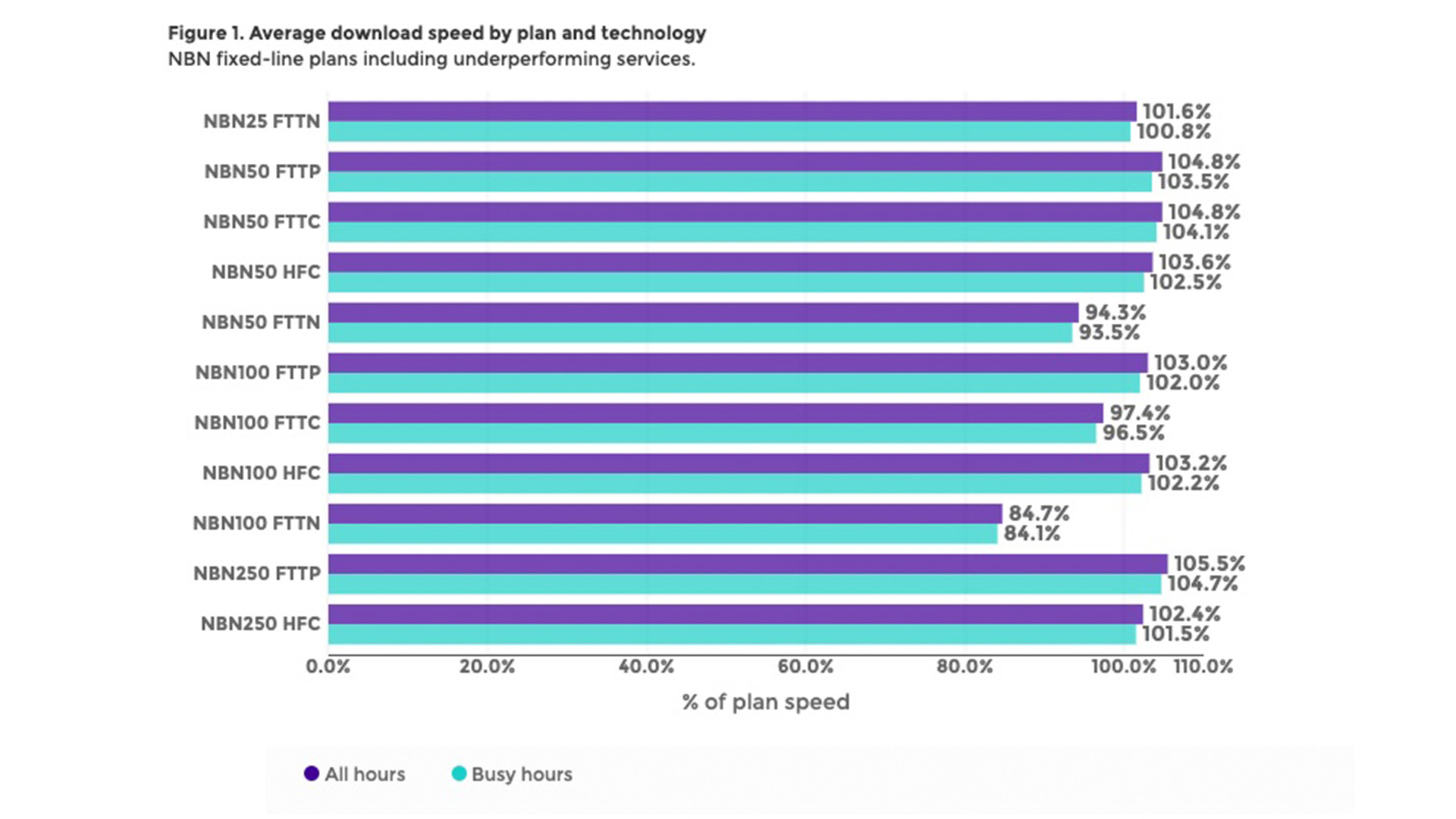NBN report card: FTTN connections trash otherwise-perfect run in latest ACCC update
ACCC report shows many FTTN users still not getting what they pay for

The Australian Competition and Consumer Commission’s (ACCC) latest broadband report has found the NBN is finally living up to its promises, with data collected in May 2021 showing fixed-line users experienced record high speeds.
On average, NBN users monitored for the report reached 98.4% of their plan’s rated speed during all hours, which fell slightly to 97.6% during the evening hours (between 7pm and 11pm when the network is at its busiest).
It’s a decent increase from the ACCC’s previous findings, which reported figures of NBN users attaining 96.5% of their plan’s top speed during all hours and 95.7% during the busy hours.
As the report points out, internet providers have mostly achieved this due to NBN Co overprovisioning the network.
- NBN plans: compare providers and best deals at every speed
FTTN NBN is the worst NBN
As has been well-documented in consecutive reports by the ACCC, not all NBN connection types are created equal.
Despite the number of underperforming services decreasing among the NBN users monitored, fibre-to-the-node (FTTN) services overwhelmingly remain the problem, and are still not performing as well as other connection types.
As shown in the table below, the ACCC found that FTTN households on an NBN 50 or NBN 100 plan received lower speeds than the maximum plan speeds achievable at any given time.
Get daily insight, inspiration and deals in your inbox
Sign up for breaking news, reviews, opinion, top tech deals, and more.

The figures are particularly dismal if you’ve got a FTTN 100Mbps plan, as it’s the worst for delivering on its speed promise, and has an average download speed about 17Mbps lower than other connection types on the tier.
The report found these monitored users reached 84.7% of their plan’s rated speed on average while other technologies were able to surpass 100% due to their overprovisioning.
Unfortunately, the only real solution for Aussie’s on underperforming FTTN NBN 100 plans is to move to a slower (and cheaper) plan.
- Cheap NBN plans: compare the best internet deals in Australia
Dodo and iPrimus show speed improvement
Along with recording record high speeds on the network during May 2021, the ACCC also found certain internet providers showed significant improvement in delivering promised speeds.
Dodo and iPrimus, which both form part of the Vocus Group, increased their performance during all hours and busy hours, up by 5.4 percentage points in comparison to the previous report, which was the biggest jump in performance among the telcos monitored.
These improvements come after Dodo and iPrimus were ordered to pay AU$2.5 million in penalties by the Federal Court for making misleading claims about the typical evening speeds on their plans.
Other improvements came from Vodafone and MyRepublic, who both recorded an increase in their speeds during the peak evening period. Vodafone jumped by 4.3 percentage points in comparison to the previous report, while MyRepublic improved by 3.7 percentage points.
Overall, the ISPs monitored reached between 92.2% and 100.5% of plan speed across all major NBN plans during busy hours, with Dodo and iPrimus recording 92.2% and Exetel topping 100.5% – the figure above 100% is due to overprovisioning.
That means the gap between ISPs is getting smaller, as the numbers account for a range of 8.3% between internet providers, compared with a range of 12.3% recorded in the previous report.
“The performance gap between retail service providers’ download speed metrics has narrowed significantly in recent reports,” says the ACCC Commissioner Anna Brakey, “however individual consumer experiences by retailer still vary”.
And that varied experience, as we know, is largely due to your fortune, or misfortune, in connection type.
- Fastest NBN plans: compare 100Mbps internet and above

Jasmine Gearie was previously an Ecommerce Editor at TechRadar Australia, with a primary focus on helping readers find the best mobile and NBN plans. During her time with TechRadar, she also reported on important telco news in Australia, and helped track down tech deals to help readers save money.